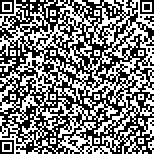| 摘要: |
| 2009年12月和2010年1月对南黄海进行浮游动物采集, 以了解冬季浮游动物群落结构及其对黄海暖流的指示作用。结果表明, 南黄海冬季仍然以温带和暖温带种为主, 中华哲水蚤Calanus sinicus、强壮滨箭虫Aidanosagitta crassa、细足法Themisto gracilipes等温带和暖温带种类在浮游动物数量组成中具有较大优势。与此同时, 一些暖水种在调查海域局部出现。2009年12月暖水种仅分布在南黄海东南部黄海暖流源地附近。位于黄海中部的调查区东侧温盐层化现象明显, 近底层低温、高盐、高营养盐的水文特征体现了黄海冷水团的残留; 2010年1月在35°—36°N区域暖水种种类明显增加, 截平头水蚤Paracandacia truncata、长尾基齿哲水蚤Clausocalanus furcatus出现的位置与暖流路径相吻合, 海洋真刺水蚤Euchaeta rimana数量相比12月有明显向北推进的趋势。主成分分析显示暖水种的分布与温度有良好的相关性。Shannon-Weaver指数、丰富度指数、均匀度指数等没有呈现明显的分布规律, 对黄海暖流的指示作用不如种类明显。 |
| 关键词: 黄海暖流 浮游动物 群落结构 指示生物 |
| DOI:10.11693/hyhz201304005005 |
| 分类号: |
| 基金项目:国家海洋局908专项, 908-01-BC12号; 国家重点基础研究发展计划, 2011CB403604号;国家自然科学基金项目, 41076099号和40821004号。 |
|
| ZOOPLANKTON COMMUNITY STRUCTURE IN THE SOUTH YELLOW SEA IN WINTER AND INDICATION OF THE YELLOW SEA WARM CURRENT |
|
WANG Liang,LI Chao-Lun,YU Fei
|
|
1.Key Laboratory of Marine Ecology and Environmental Sciences, Institute of Oceanology, The Chinese Academy of Sciences;2.Research and Development Center of Marine Environmental Engineering and Technology, Institute of Oceanology, The Chinese Academy of Sciences
|
| Abstract: |
| Zooplankton community structure in winter was studied in the South Yellow Sea during two cruises in December 2009 and January 2010. The indication of warm water zooplankton to the Yellow Sea Warm Current (YSWC) was also analyzed based on these data. The zooplankton community was dominated by temperate and warm-temperate species in the South Yellow Sea in winter, of which Calanus sinicus, Aidanosagitta crassa, and Themisto gracilipes were overwhelming species. In December 2009, most warm water species were found in the southeast part of survey area where YSWC intruding. The eastern part of the survey area presented hydrographic characteristics of the remained Yellow Sea Cold Water: low temperature, high salinity and high nutrient contents. In January 2010, more warm water species were found between 35°N and 36°N. The locations of the tropical species Paracandacia truncata and Clausocalanus furcatus were consistent with the path of the YSWC. The distribution of the amount of Euchaeta rimana presented the northward trend in comparison with that in December, 2009. Principal Component Analysis indicated that occurring of warm species was related to seawater temperature. The influence of YSWC on zooplankton community structure was small during the study period. |
| Key words: Yellow Sea Warm Current zooplankton community structure bio-indicator |
